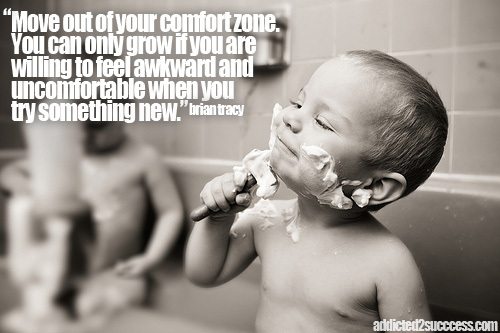Success Advice
3 Ways Assuming Negative Intent Limits Your Potential

We have all heard that negativity can crush our chances for success, holding us down and keeping our dreams and talents from shining through.
When we focus more on the negative aspects of ourselves instead of the ways in which we are amazing, or when we surround yourself with negative people, it can be almost impossible to move forward.
Joel Brown wrote a great article about the ways negativity holds us back from success.
The aspect of negativity that I think people don’t consider because they don’t understand how it limits their potential for success is assuming negative intent in others.
It is somewhat easy to recognize when you are being negative with yourself, or when you hear others complaining, but what about your expectations of others intent?
Here are the three most common ways we assume negative intent in others and subsequently sabotage our own success:
1. We are afraid to share our ideas with others because we think they will steal them
Getting feedback on your ideas, whether they are new business ideas or ways to improve something at work, is one of the best ways to determine if they have real value.
The truth is, most people do not have the drive and motivation to take an idea and create something with it.
You do have that motivation, that’s why you are worried (and also why you are here).
But we all need mentors, supporters, and even critics to help us succeed.
Stop focusing on the potential for someone to take your idea, and put it out where you can get feedback and make it the very best version of your idea that it can be.
That is what will make you a success.

2. We assume others intentionally disrespect us or have it out for us
Everyone has bad days, and everyone makes mistakes.
We get stood up for a meeting, someone snaps at us in front of others, or someone seems to not be following through on a promise, and we automatically believe they are out to get us.
Often times, however, there are circumstances of which we are not aware that contribute to the incident.
A family emergency, an argument with a spouse or other third party, bad news about an investment or opportunity they were pursuing.
It is easy to take the hurt or embarrassment we are feeling out on the other person, causing the situation to spiral out of control.
Taking a step back from those immediate feelings and asking why the other person responded as they did can make a huge impact on the relationship and keep it intact.
Healthy, productive relationships are the cornerstone of all successful people and businesses.
“The primary cause of unhappiness is never the situation, but your thoughts about it” – Eckhart Tolle
3. We assume others will take advantage of our trust and kindness
Much broader than just assuming someone will steal a great business idea, we often think someone trying to sell us something is going to swindle us, or the coworker who wants our input on a project just doesn’t want to do the work.
There will always be bad people who take advantage of others, and we do have to be careful not to let others take our generosity for granted.
However, walking into any interaction with the assumption someone intends to take advantage sets the entire experience up for failure.
Unless you know that someone habitually takes advantage of you or others, give them the benefit of the doubt and treat them as a partner or ally.
You never know when that person may be the person you needed to meet or work with in that moment, and assuming they are just taking advantage of you will never allow that to come through.
“Believing in negative thoughts is the single greatest obstruction to success.” – Charles F. Glassman
All three of these attitudes can lead to self-fulfilling prophesies in your relationships and business deals.
People can sense when they are not trusted or when someone feels uncomfortable with them.
They in turn become defensive and untrusting, and it becomes incredibly difficult to get the relationship or interaction back on track.
Check your attitudes and intentions before interacting with others.
Keep an open mind about how you can having meaningful and beneficial relationships with everyone.
Assuming negative intent in others holds you back from success by damaging relationships and keeping you from learning and growing, but you can change your thought patterns.
Do you have examples of this in your own life? Or specific techniques you have used to change thought patterns? We’d love to hear from you!
Did You Know
How Skilled Migrants Are Building Successful Careers After Moving Countries
Behind every successful skilled migrant career is a mix of resilience, strategy, and navigating systems built for locals.

Moving to a new country for work is exciting, but it can also be unnerving. Skilled migrants leave behind familiar systems, networks, and support to pursue better job opportunities and a better future for their families. (more…)
Life
10 Research-Backed Steps to Create Real Change This New Year
This New Year could finally be the one where you break old patterns and create real, lasting change.

Every New Year, we make plans and set goals, but often repeat old patterns. (more…)
Change Your Mindset
The Silent Skill That Makes People Respect You Instantly
What truly earns respect and why most people go about it the wrong way

Everybody craves respect but not everyone earns it. Some people believe that a title, years of experience, or a position of authority automatically entitles them to respect. (more…)
Entrepreneurs
The Essential Skills Every Entrepreneur Needs In 2026
Success in the digital age isn’t about luck. It’s about mastering the skills that separate dreamers from doers.

When I was 22 years old, I started my first side hustle as a ghostwriter. (more…)
-

 Entrepreneurs4 weeks ago
Entrepreneurs4 weeks agoThe Essential Skills Every Entrepreneur Needs In 2026
-

 Change Your Mindset3 weeks ago
Change Your Mindset3 weeks agoHow to Turn Your Mind Into Your Greatest Asset (Instead of Your Enemy)
-

 Change Your Mindset3 weeks ago
Change Your Mindset3 weeks agoThe Silent Skill That Makes People Respect You Instantly
-

 Life2 weeks ago
Life2 weeks ago10 Research-Backed Steps to Create Real Change This New Year
-

 Tech2 weeks ago
Tech2 weeks agoWhat’s in a Name? How to Get Your Domain Right
-

 Did You Know2 weeks ago
Did You Know2 weeks agoHow Skilled Migrants Are Building Successful Careers After Moving Countries

























3 Comments